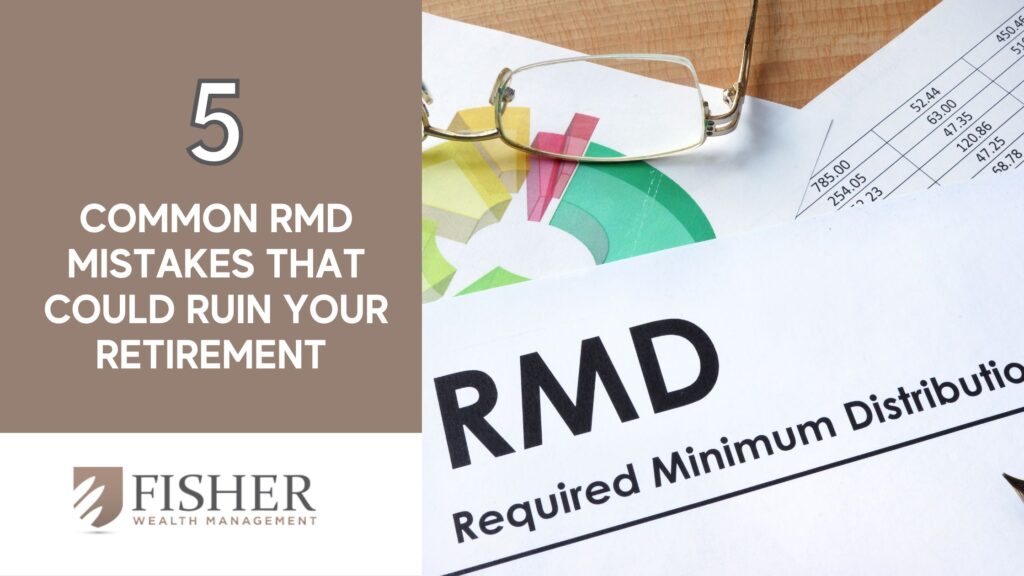
5 Common RMD Mistakes That Could Ruin Your Retirement
As age 73 nears, it is critical that you begin considering how you want to handle the required minimum distributions (RMDs) you are obligated to withdraw from your tax-advantaged retirement accounts, including 401(k)s, 403(b)s, 457s, and individual retirement accounts (IRAs). According to US New Money, 62% of Americans aren’t even aware that they have to take an RMD, and a fair share of those that do make mistakes they could have avoided. Here are a five common RMD mistakes that could prove costly.
1. Forgetting to take your RMD
We lead busy lives, even as retirees, and it is more common than you might think for people to forget to take their RMD before the applicable deadline. Doing so may result in a 50% penalty imposed by the IRS. One recourse that might be beneficial is to contact your financial institution and find out if they have automatic RMD withdrawal options to help you stay on time. These choices vary from monthly distributions to semiannual, quarterly, or annual. Staying on top of your financial responsibilities can help save money and alleviate some of your financial stress.
2. Delaying your first RMD
For individuals who need extra time to prepare for the withdrawal, the IRS allows you to defer your first RMD to April 1st of the following year. This strategy may not be the most beneficial approach, as delaying that first payment will require you to make two RMDs within a year. If you have large accounts, you could find yourself looking at two sizeable taxable withdrawals in the same year, bumping you into a higher tax bracket and potentially subjecting you to the Medicare surcharge.
3. Using the wrong balance to calculate your RMDs
Many people will try to calculate how much they owe for their RMDs; however, they won’t use the proper balance. This will generate an RMD less than the required amount, and you may be subject to a penalty. If you withdraw more than the threshold, it is fine. There is a floor but no ceiling regarding the withdrawal amount. According to the IRS, an RMD is calculated for each account by dividing the prior December 31st balance of that IRA or retirement plan account by the age-based distribution period found in the IRS table.
Three tables provide those distribution periods:
- If you are married, your spouse is the sole beneficiary of your account, and if they are younger than you by ten years or more than you, you use the IRS’s Joint and Last Survivor Table.
- All other original IRA owners use the IRS’s Uniform Lifetime Table.
- If you inherited your IRAs, you will use the Single Life Expectancy Table.
4. Mixing Plan Types
You are not allowed to use the withdrawals from different retirement accounts to meet the RMD threshold for one of those accounts.
- If you have multiple 401(k) or 457(b) accounts, you must withdraw an RMD from each account separately.
- If you have multiple IRA or 403(b) plans, you can take your total IRA RMD from just one of those accounts.
- Regarding employer-sponsored retirement plans, if you have more than one former retirement plan with different employers, you must take the RMD from each account separately.
5. Paying distributions for both spouses from one spouse’s account
There are several financial assets that married couples can hold jointly; however, retirement accounts don’t fall into that category. Retirement accounts must be owned individually, and the responsibility to take RMDs applies to that owner, even if you file taxes jointly.
Other key takeaways
If you own a Roth IRA, you are not required to take an RMD while the account holder is alive. If you inherited the account, you may be required to take distributions. Failing to take this action could subject you to hefty penalties.
- RMDs are considered income, and a spouse who withdraws too much might also owe more in Social Security and Medicare premiums because of the higher income.
Get help from a financial professional before making financial decisions
With so many moving parts and the complex nuances involved with taking RMDs, getting help from a financial professional could save you a headache and potentially a significant amount of money the government would otherwise get. Take five minutes and schedule that meeting with your financial professional today because tomorrow will come quickly, and you want to stay ahead of the curve.
Important Disclosures:
The opinions voiced in this material are for general information only and are not intended to provide specific advice or recommendations for any individual. To determine if your investment(s) require Required Minimum Distributions (RMD), consult your financial professional.
This information is not intended to be a substitute for specific individualized tax advice. We suggest that you discuss your specific tax issues with a qualified tax advisor.
All information is believed to be from reliable sources; however, LPL Financial makes no representation as to its completeness or accuracy.
Prepared by LPL Marketing Solutions
Sources;
Common required minimum distributions mistakes to avoid | Fortune Recommends
Taking Required Minimum Distributions? These Mistakes Could Cost You (investopedia.com)
Required Minimum Distribution Mistakes to Avoid (usnews.com)
LPL Tracking # 491033